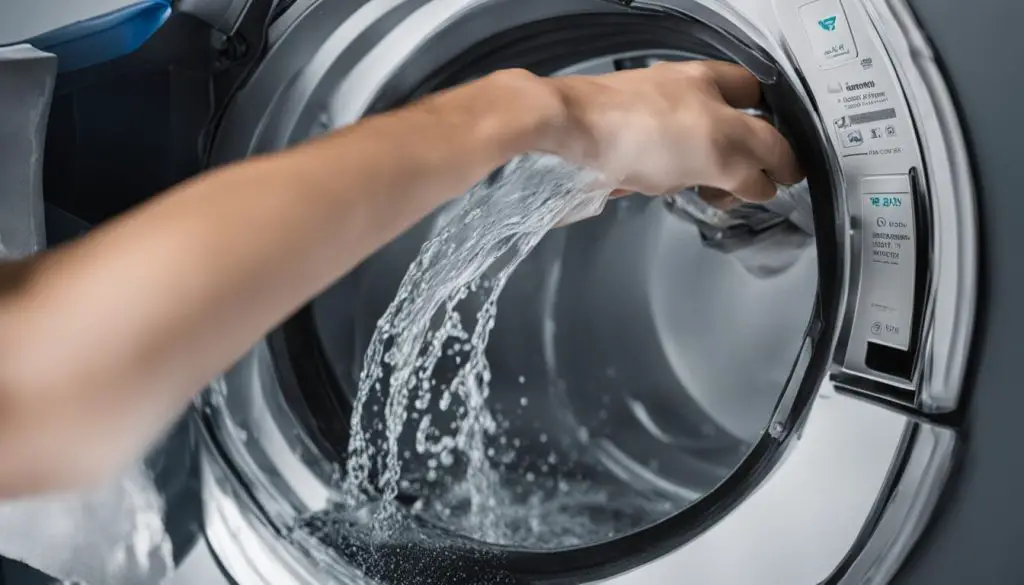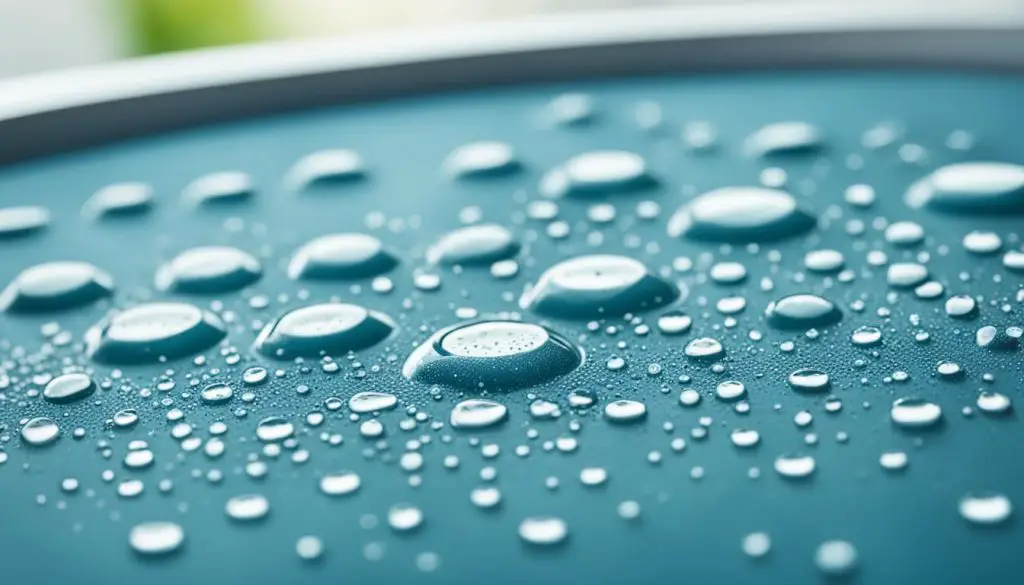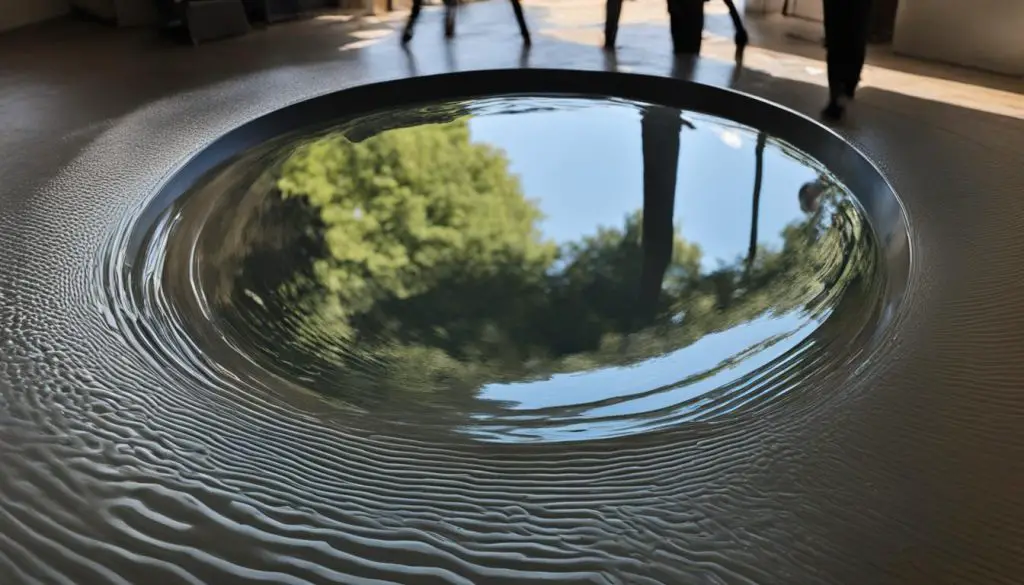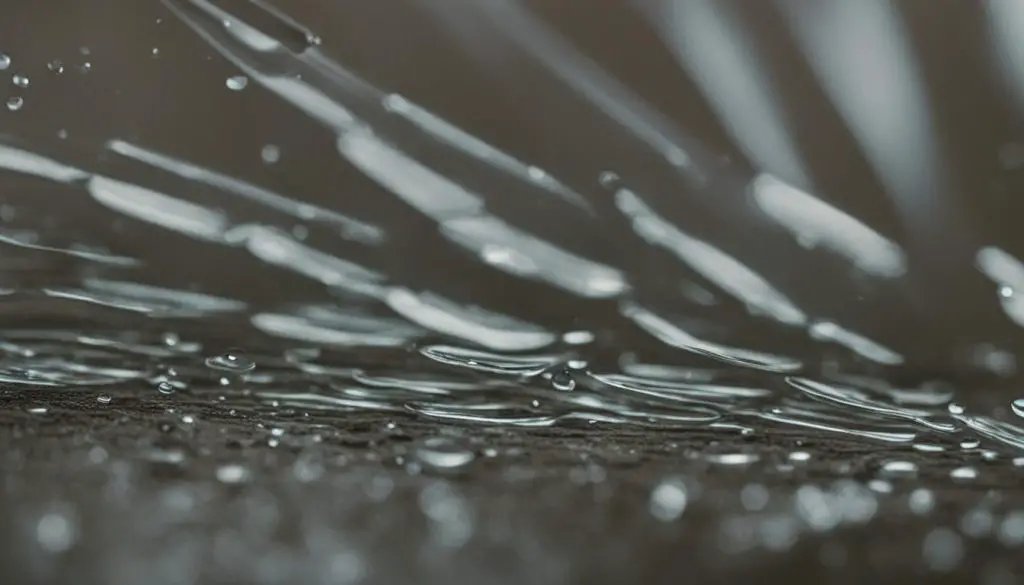Leaking washing machines are not only frustrating but can also lead to potential damage to your floors and home. If you are experiencing a leak, it’s important to identify the cause and address it promptly to avoid further issues. In this article, we will explore common causes of washing machine leaks, troubleshoot possible solutions, and provide helpful tips to fix and prevent leaks.
Key Takeaways
- Leaks in a washing machine can be caused by various factors.
- Common causes include damaged water pumps, faulty tub seals, loose drain pipes, and clogged hoses.
- Proper diagnosis is crucial to determine if you can fix the issue yourself or if professional help is needed.
- Regular maintenance, such as inspecting hoses and connections, can help prevent leaks.
- Avoid overloading the machine and use the correct amount of detergent to prevent unnecessary strain and potential leaks.
Washing Machine Leaking From the Bottom
If you notice water pooling from the bottom of your washing machine, it can be a sign of a potential leak. This can be a frustrating issue that needs to be addressed promptly to avoid any further damage. There are a few common causes of a washing machine leaking from the bottom:
1. Damaged Water Pump
The water pump is responsible for circulating water throughout the wash cycle and draining it out of the tub. If the water pump is damaged or worn out, it can cause leaks from the bottom of the machine. Inspect the water pump for any signs of cracks, clogs, or leaks. If necessary, replace the water pump to resolve the issue.
2. Faulty Tub Seal
A faulty tub seal can also cause a washing machine to leak from the bottom. The tub seal is located between the outer tub and the transmission assembly and helps prevent water from leaking out of the machine. If the tub seal is worn out or damaged, it may need to be replaced to stop the leak.
3. Cracked or Loose Drain Pipe
A cracked or loose drain pipe is another potential cause of a washing machine leak. The drain pipe carries the water from the machine to the sewage system. Over time, the drain pipe can develop cracks or become loose, resulting in water leakage. Check the drain pipe for any visible cracks or loose connections. If necessary, repair or replace the drain pipe to fix the leak.
When dealing with a washing machine leak from the bottom, it is essential to diagnose the exact cause of the issue. This will help you determine whether you can fix it yourself or if you need to seek professional assistance. In some cases, replacing the tub seal or adjusting the leveling feet can solve the problem. However, if the issue persists or requires technical expertise, it is advisable to schedule a service call with a licensed technician.
Here is a table summarizing the causes and solutions for a washing machine leaking from the bottom:
| Cause | Solution |
|---|---|
| 1. Damaged Water Pump | Replace the water pump |
| 2. Faulty Tub Seal | Replace the tub seal |
| 3. Cracked or Loose Drain Pipe | Repair or replace the drain pipe |
Washing Machine Hose Leaking
If you notice water leaking from the bottom of your washing machine, one possible culprit could be the fill and drain hoses. These hoses, responsible for bringing water into the machine and draining it out, can develop issues over time that lead to leaks. Common problems include blockages, kinks, damage, or loose connections.
To address a leaking washing machine hose, start by ensuring that the hoses are securely attached to the machine. Check for any loose connections and tighten them if necessary. It’s also important to inspect the washers on the inlet hoses and make sure they are in place to create a tight seal.
To further troubleshoot the issue, inspect the drain hose for kinks or clogs that could be causing water backup. Straighten out any kinks and clear any clogs to restore proper drainage. If you find that the hoses are damaged beyond repair, it’s essential to replace them to prevent further leaks and potential water damage.

Water Dripping Into Washing Machine
If you notice water dripping into your washing machine even when it is turned off, the culprit could be a faulty washer inlet valve. The washer inlet valve is responsible for allowing water to flow into the tub during a wash cycle. However, if it becomes damaged or develops cracks, it can lead to water leakage from the back of the machine.
To address the issue of water dripping into the washing machine, follow these steps:
- Unplug the appliance: Before inspecting the inlet valve, it is crucial to ensure your safety by disconnecting the washing machine from the power supply. Unplugging the machine will prevent any electrical hazards.
- Inspect the inlet valve: Once the machine is unplugged, examine the washer inlet valve for any signs of leaks or damage. Look for cracks, loose connections, or any other visible issues that may be causing water to drip.
- Schedule a service call: If you identify any problems with the washer inlet valve or are unsure how to proceed with the repair, it is recommended to seek assistance from a professional technician. They have the expertise to diagnose and resolve the issue effectively.

Water Under Washing Machine Drum
One common issue that homeowners may encounter with their washing machines is the presence of water under the wash drum. This can be a cause for concern, as it indicates that the machine is not draining properly. There are several factors that can contribute to water collecting under the drum, including a kinked or clogged drain hose and overpacking the machine with laundry.
When the drain hose becomes kinked or clogged, water cannot flow out of the machine efficiently, resulting in pooling under the drum. To prevent this, it is important to regularly check the drain hose for any obstructions or bends. If you notice any kinks or clogs, carefully straighten or clear them to ensure proper drainage.
Additionally, overpacking the washing machine can also lead to water under the drum. When the machine is overloaded with laundry, it can impede the proper movement of water during the wash cycle. This can cause water to accumulate and not drain adequately. To prevent this issue, it is recommended to follow the manufacturer’s guidelines for load capacity and avoid overpacking the machine with excessive amounts of laundry.

| Common Causes | Preventive Measures |
|---|---|
| Kinked or clogged drain hose | – Regularly inspect and clear the drain hose – Avoid placing objects on or near the hose that may cause kinks |
| Overpacking the machine with laundry | – Follow the manufacturer’s guidelines for load capacity – Avoid overstuffing the machine with excessive amounts of laundry |
Conclusion
If you’re dealing with washing machine leaks, it’s essential to address the issue promptly to prevent water damage and costly repairs. Leaks can occur due to various factors, such as damaged pumps, faulty seals, loose connections, or clogged hoses. While some leaks can be fixed by homeowners, seeking professional repair from a licensed technician is often the best course of action.
To prevent washing machine leaks and subsequent water damage, it’s crucial to adopt preventive measures. Regularly inspect your hoses and connections for any signs of wear or damage. Replace any faulty components promptly to avoid potential leaks. Additionally, ensure you’re using the correct amount of detergent, as excessive soap can cause excessive suds and overflow.
Remember, prevention is key when it comes to safeguarding your home from water damage caused by washing machine leaks.
FAQ
Why is my washing machine leaking?
Leaks in a washing machine can be caused by various factors, including damaged pumps, faulty seals, loose connections, or clogged hoses. It is important to properly diagnose the cause of the leak to determine if you can fix it yourself or if you need to contact a licensed technician.
How do I fix a washing machine leaking from the bottom?
If you notice water pooling from the bottom of your washing machine, the cause could be a damaged water pump, a faulty tub seal, or a cracked or loose drain pipe. To fix a washing machine leaking from the bottom, you may need to replace the tub seal, adjust the leveling feet for balance, or schedule a service call with a licensed technician.
What should I do if my washing machine hose is leaking?
Leaks from the bottom of a washing machine can often be caused by issues with the fill and drain hoses. To fix a leaking washing machine hose, ensure that the hoses are securely attached to the machine and that the washers on the inlet hoses are in place. Inspect the drain hose for any kinks or clogs that may be causing a water backup. If needed, replace damaged hoses to prevent further leaks.
Why is water dripping into my washing machine even when it is turned off?
If water is dripping into your washing machine even when it is turned off, the issue may be a faulty washer inlet valve. To fix water dripping into the washing machine, unplug the appliance and inspect the inlet valve for any leaks or damage. If necessary, schedule a service call with a professional for repair or replacement.
What can cause water to collect under the washing machine drum?
Water collecting under the wash drum can be caused by a variety of factors, such as a kinked or clogged drain hose or regularly overpacking the machine with laundry. To prevent water under the washing machine drum, regularly check the drain hose for kinks or clogs and ensure it is properly connected. Avoid overpacking the machine to allow for efficient drainage during the wash cycle.






